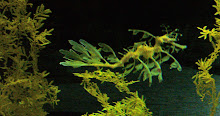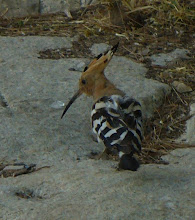
Female Polar Bear (photographed beside Whale Carcass at the Arctic National Wildlife Refuge, Alaska, USA by Alan D. Wilson) (for image source and (creative commons) license details, click [HERE] )
Recent science news has been dominated by the E. coli outbreak in Germany and its casualties in various parts of Europe. The latest news on this, according to both Sky news and The International Herald Tribune, is that the source of the outbreak was or was associated with sprouted beans from a German organic farm-
http://www.nytimes.com/aponline/2011/06/05/world/europe/AP-EU-Contaminated-Vegetables-Europe.html?_r=1&ref=global-home
Organic farming is widely considered more healthy than standard farming by the general public, however, it does have its own problems; so the idea that organic farming could be associated with bacterial problems is not as surprising as the Agriculture Minister seems to imply in this article. Known potential problems with organic food include a higher risk of toxic and carcinogen-producing- moulds growing on the produce than with conventionally farmed vegetables.
One of the more beautiful stories this week is the creation of an ice bear sculpture in Sydney to highlight climate change-
http://tinyurl.com/5wzlgqo
Sticking with the Polar bear theme , the first Quote-of-the-week this week is taken from the Kenya Diary the British Army Intelligence Officer, voracious Game Hunter, Ornithologist and Diarist Richard Meinertzhagen-
“I sat by the lake most of the day, watching the hippo, duck and flamingo. There are still a few northern waders about, notably greenshank, marsh sandpiper and little stint. One single sanderling attracted my attention for being so far inland. To consort with hippo in winter and polar bears in summer must be a delightful experience and yet that is what this small bird must do every year.”
-Richard Meinertzhagen, 21st Feb 1903, Lake Nakuru, Kenya.(Kenya Diary, 1902-06 (1902-1906)

Sanderling, picture by Pierre Camateros, (for image source and (creative commons) license, click [HERE] )
The Sanderling, which has been described, variously, by three biological names- Calidris alba, Crocethia alba and Erolia alba – is a small wading bird with a famously long migratory route. It is unusual because it has also been known to form polyandrous (one female and two male) pairings in the mating season, with one female pairing off with two males, instead of the more usual monogamous pairs of one male and one female.
(You can find more details about it [HERE]).
Meinertzhagen’s diaries are famously blood-soaked accounts
The second, and final quote-of-the-week, then is his comments on viewing a lunar rainbow -
“I went to the top of Silie Hill after supper. It was full moon at the time with a fairly heavy mist. I witnessed for the first time a lunar rainbow, which was very beautiful, though somewhat weird”
- Richard Meinertzhagen, 12th November 1905. Silie Hill, Nandi, Kenya, Kenya Diary, 1902-06 (1902-1906)

Image of lunar rainbow (moonbow) over Victoria Falls (image by Calvin Bradshaw – for image source and license details, click [HERE]).








